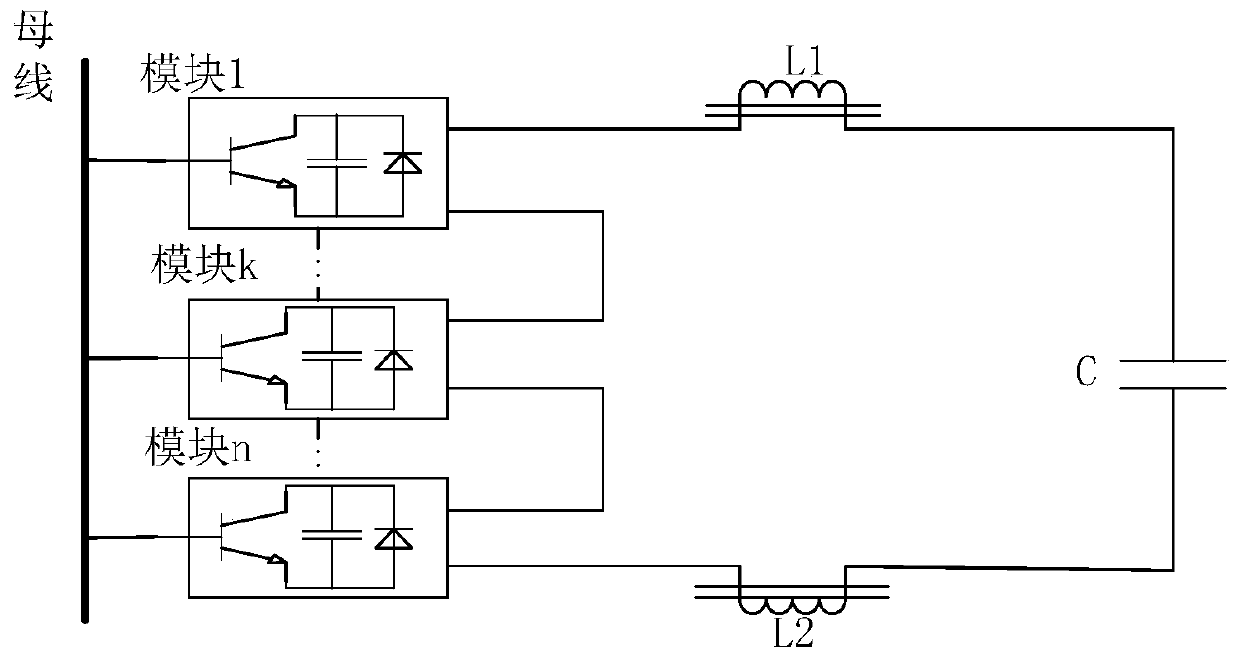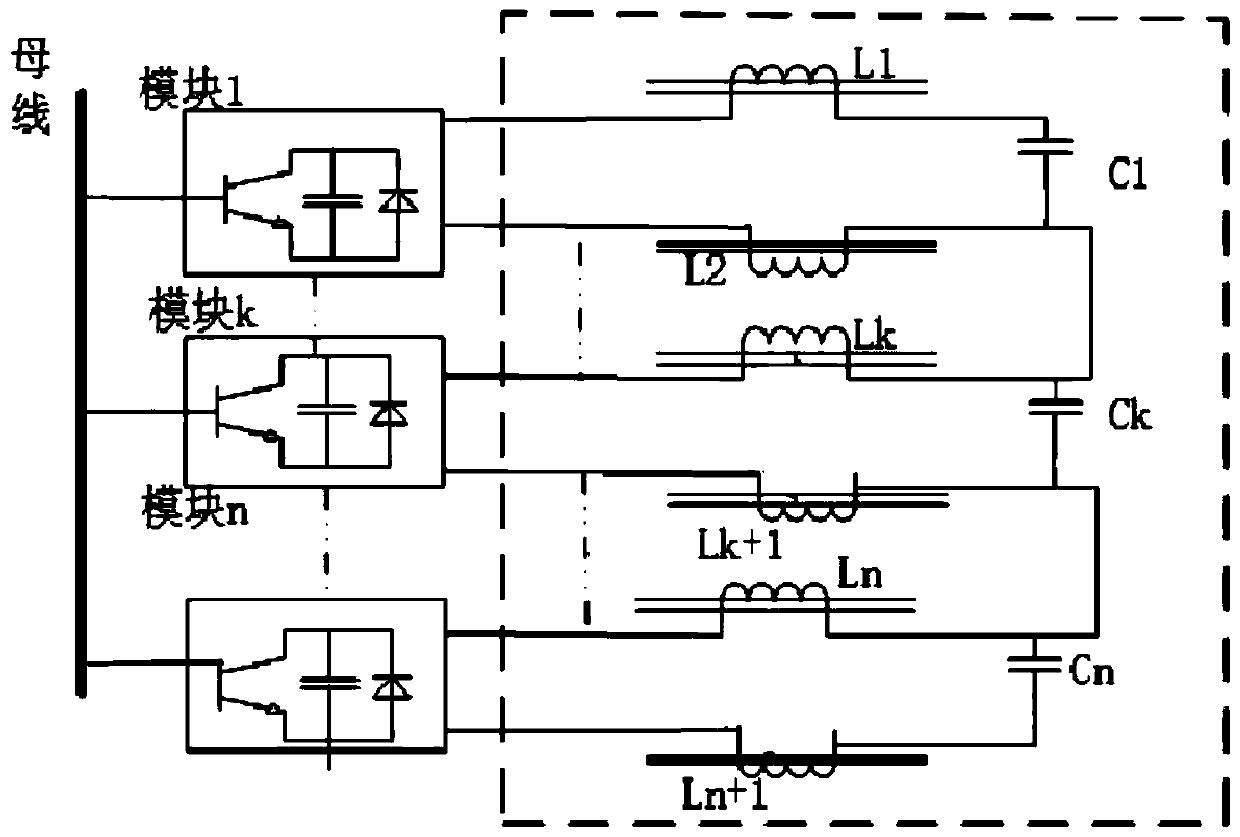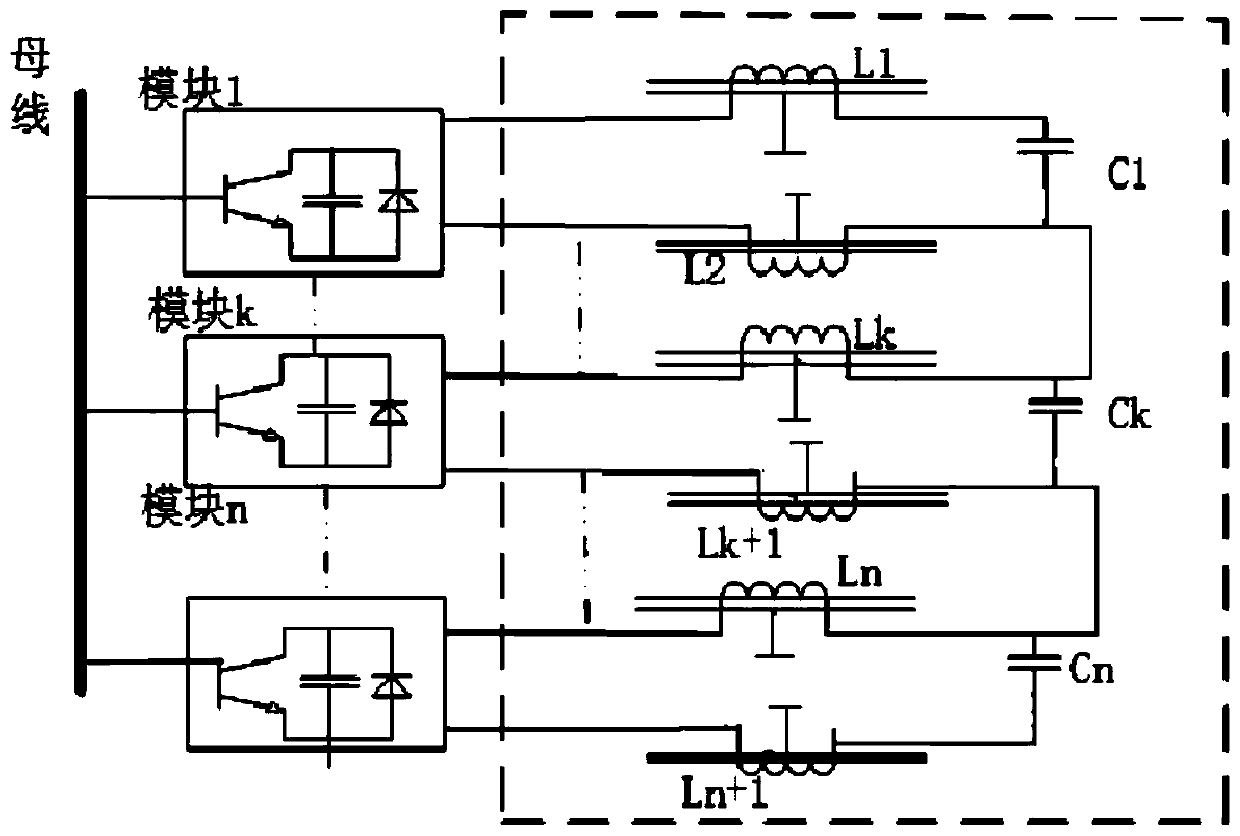DC transformer
A DC transformer, positive electrode technology, applied in the direction of converting DC power input to DC power output, instruments, adjusting electrical variables, etc., can solve the problems of high cost and large size of DC transformer, and achieve low production cost, size and capacity reduction. , to avoid the effect of partial discharge phenomenon
- Summary
- Abstract
- Description
- Claims
- Application Information
AI Technical Summary
Problems solved by technology
Method used
Image
Examples
Embodiment 1
[0025] Such as figure 2 The shown DC transformer includes at least n DC / DC modules, which are respectively module 1, ..., module k, ..., module n, and the output terminals of each DC / DC module are connected to distributed inductance circuits with the same structure, Taking the distributed inductance circuit of module 1 as an example, the distributed inductance circuit includes: a positive inductance L1 with an iron core, a negative inductance L2 with an iron core, and a capacitor module (namely capacitor C1).
[0026] Among them, the positive inductor L1 with an iron core is used to connect the positive pole of the output terminal line of the module 1, and the negative pole inductor L2 with an iron core is used to connect the negative pole of the output terminal line of the module 1; and, the positive pole inductor L1 with an iron core and the negative pole inductor A capacitor module (capacitor C1) is arranged in series between L2.
[0027] The distributed inductance circui...
Embodiment 2
[0032] In the medium-voltage and high-voltage DC distribution network, when the DC transformer in the above-mentioned embodiment 1 adopts a modular cascade topology, due to the lack of electrical connection between the iron core in the DC transformer and the main circuit, a floating potential will be generated. When the electric field When the intensity is uneven, the floating potential will generate a certain electric field, which will cause discharge phenomenon, and in severe cases, the insulating layer will be burned, affecting the stable operation of the equipment. Therefore, on the basis of the DC transformer in Embodiment 1, this embodiment proposes a DC transformer, such as image 3 As shown, in each distributed inductance circuit, the iron core of the negative inductor is grounded, and the iron core of the positive inductor is grounded, which effectively reduces the floating potential of the DC transformer inductor core, avoids the partial discharge phenomenon of the DC...
Embodiment 3
[0034] In order to solve the problems of large volume, high cost and floating potential of the DC transformer at the same time, this embodiment proposes a DC transformer, such as Figure 4 As shown, it includes at least n DC / DC modules, which are respectively module 1, ..., module k, ..., module n, and the output terminals of each DC / DC module are connected with a distributed inductance circuit with the same structure, and module 1 Taking the distributed inductance circuit as an example, the distributed inductance circuit includes:
[0035] Positive inductance L1 with iron core, negative inductance L2 with iron core, and a capacitor module, the capacitor module includes positive capacitor C1 and negative capacitor C2, positive capacitor C1 and negative capacitor C2 are connected in series, positive capacitor C1 and negative capacitor C2 The series point (that is, the neutral point of the capacitor) is connected to the iron core of the positive inductor L1 through the first res...
PUM
 Login to View More
Login to View More Abstract
Description
Claims
Application Information
 Login to View More
Login to View More - R&D
- Intellectual Property
- Life Sciences
- Materials
- Tech Scout
- Unparalleled Data Quality
- Higher Quality Content
- 60% Fewer Hallucinations
Browse by: Latest US Patents, China's latest patents, Technical Efficacy Thesaurus, Application Domain, Technology Topic, Popular Technical Reports.
© 2025 PatSnap. All rights reserved.Legal|Privacy policy|Modern Slavery Act Transparency Statement|Sitemap|About US| Contact US: help@patsnap.com



